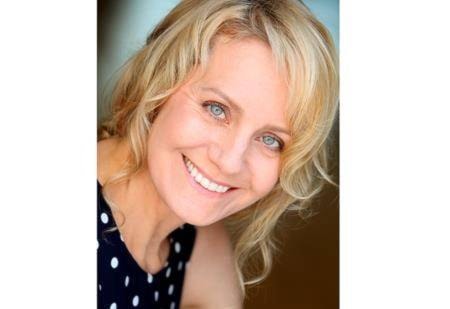LOS ANGELES — Eileen Grubba was working alongside other actors on a TV commercial when she realized the director’s eye was caught by her uneven gait. He started positioning her out of the shot — and then it got worse.
Shooting a scene on a bus, the director ordered Grubba to get up and move from her seat in the middle to one in the rear and fully out of the frame.
“‘So now we’re going to make the disabled people sit at the back of the bus? That’s awesome,’” Grubba, who uses a leg brace as a result of childhood spinal cord damage, recalled thinking some six years ago.
The disheartening experience reflects the broader picture for many actors with disabilities, whose progress in Hollywood has lagged that of other minority performers demanding to be seen and hired. The reasons are complex, insiders and observers say, including unfounded concerns about added production costs, disability stereotypes and an industry clinging to entrenched habits.
“The fact is this is the largest minority group in the United States that routinely is discriminated against in the (entertainment) industry, and we’re trying to move the needle,” said Jay Ruderman, head of a non-partisan foundation that advocates broadly for inclusion for people with disabilities.
There are some high-profile successes on TV, among them wheelchair-using actor Daryl Mitchell on CBS’ “NCIS: New Orleans,” Micah Fowler, who has cerebral palsy and stars on ABC’s “Speechless,” and little person Peter Dinklage, the Emmy- and Golden Globe-winning star of HBO’s “Game of Thrones.” He’s also earned theatrical film roles (“Three Billboards Outside Ebbing, Missouri”).
But studies show them to be outliers, even as a diversity groundswell has benefited actors of colour and African-Americans in particular — including Chadwick Boseman (“Black Panther”) on the big screen, Emmy-winner Sterling K. Brown (“This Is Us”) on the small one and Oscar- and Emmy-winner Viola Davis on both. LGBTQ performers, among them Laverne Cox, are making gains in visibility and work as well.
More than 56 million people, or nearly 20 per cent of the U.S. population, have a disability, according to a 2012 Census Bureau report. But in 900 films released in theatres between 2007-2016, a total of 2.7 per cent of the characters with speaking parts had a disability, say researchers at the USC Annenberg School for Communication and Journalism.
Of the 20 characters with disabilities tallied on the 10 top-rated broadcast and cable TV shows airing in 2016, only one actor (Mitchell of “NCIS”) had the disability portrayed on screen, a Ruderman Family Foundation study found. In 21 prominent series on streaming platforms, two actors out of the 17 playing characters with disabilities had a real-life disability.
Hollywood isn’t alone in its employment practices. In 2016, the Bureau of Labor Statistics found that the unemployment rate for people with disabilities was more than double that of the non-disabled (10.5 per cent vs 4.6 per cent).
Shows lean heavily toward conditions that aren’t physically visible, so a role involving an apparent disability may go to an actor with the condition, or not. In “Strong,” the film about a Boston Marathon bombing survivor left a double amputee, a computer-altered Jake Gyllenhaal played the part.
That leaves performers with disabilities largely out in the cold.
“Disabled people read (audition) for roles and characters that are disabled, but they don’t read for able-bodied characters,” even if their disability wouldn’t affect the portrayal or story, said actor Kurt Yaeger (Greg the Peg on “Sons of Anarchy”). Yaeger, who lost a leg in a motorcycle accident, said his agility with a prosthetic allows him to “hide” it for non-disabled parts and increase his job options.
Scott Silveri, creator and executive producer of ABC’s “Speechless” joins in brushing away the tired notion that a story’s dramatic flow or audience would be thrown off by seeing a physically challenged person.
“When you go into a bank and a teller has a limp, do you get confused, walk out into the parking lot and walk around?” he said. “What’s the big deal? Go outside — there are crutches and canes and wheelchairs, and people using them.”
Silveri is among those trying to make a difference. After working on fluffy hit sitcoms including “Friends,” the writer-producer decided to peer into his own life and create a series about a youngster with cerebral palsy and his family. (Silveri’s brother, who had the condition, died recently at age 47.)
Other industry heavyweights are joining the effort.
Russell Boast, president of the Casting Society of America, has made it a cause for casting directors. In January, the group’s members held open calls for performers with disabilities in 50 places nationwide that drew almost 1,000 people. The society also works with the actors’ guild, SAG-AFTRA, on events.
If the industry’s excuse for not using these actors is because they don’t exist, “I’m going to prove that’s a myth and I’m going to show you these actors do exist, they’re hungry to work and there are some amazingly talented performers that just haven’t had a chance,” Boast said.
